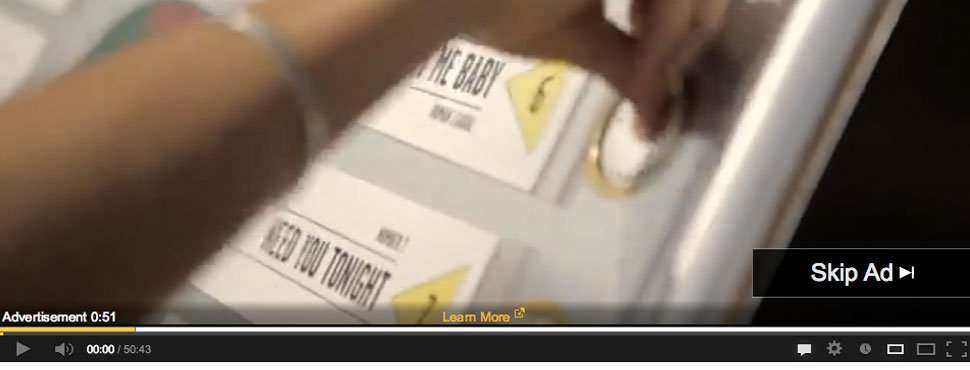Skipping ads online is undoubtedly a common activity now. Since 2010 when YouTube first introduced the option, consumers have grown accustomed to being able to click past ads they don’t wish to see after just five seconds.
Because of this, advertisers increasingly have the opportunity to pay only for ads that demonstrate some level of engagement. This is being recognised by online video hosting channels, such as YouTube, where advertisers are billed only if a user clicks on or watches at least 30 seconds of an ad (or watches an ad to completion if it is less than 30 seconds long).
Of course, many advertisers still view the introduction of skippable advertising as something of a death knell – and why not, when in theory it gives consumers the option to engage with as little of their hard work and creativity as possible. But it’s a part of the make-up of the digital advertising landscape now, and it is here to stay. This is especially true with a variety of skippable ad options available, including TrueView and SmartView, to name two. And more savvy brands are realising the advantages to be had.
For starters, skippable ads can actually let advertisers target viewers at-scale and run smarter campaigns that reach the right audience with the right message. As a format, it presents a unique opportunity for advertisers to pay only for views rather than the traditional CPM model. It also works particularly well for advertisers with compelling creative, such as TV show promotions or movie trailers, and long-form content seen in political ads.
On another creative note, giving consumers the option to skip ads encourages brands and their agencies to get to the point quicker. In this day and age, where consumers are bombarded with messages from multiple devices 24/7, this is really not a bad thing. I remember once being told that in terms of TV advertising, some brands never display the actual brand name until the last few frames of an ad – perhaps because leaving that bit until last is most effective for brand recall. In the modern world of the skippable ad, this is rarely going to be the best tactic, as the first five seconds of an ad are essentially a free opportunity for advertisers to relay their message (before it becomes skippable). It’s going to be interesting to see how ad creative changes and develops to accommodate this fact over the next few years – which to me is exciting.
Yet despite the growing evidence to suggest that skippable ads are not only a viable option for online advertisers, but an intelligent one too, many brands simply upload their TV ads to the internet and hope for the best when it comes to engagement rates. Understandably, in the sense that if you spend a fortune on a TV ad, you’re likely to want to spend even more to optimise it for online viewers, but we are now witness to a sea change where this is inevitably starting to happen. Even Apple is rumoured to be talking to major networks about incorporating an ad skipping option into Apple TV, which will only increase pressure on advertisers to adapt.
Of course in one sense, you can no more tell if a consumer has watched an online ad in its entirety than they have a TV one – what’s to say they haven’t picked up their mobile to send a message or simply walked into another room while an ad plays out in the background? Thanks to ad skip technology, you can at least tell when they are definitely not watching, which is data that is worth its weight to advertisers when it comes to assessing whether their ads are creative and engaging enough, and indeed aimed at the right audience.
At the end of the day, if a user skips your ad then the advertiser doesn’t pay for it and the user is happy for having been given the choice to skip. It’s time for all of us to embrace this as a ‘win win’ opportunity. The skippable ad format simply means that viewers who choose to watch an ad are, on average, more engaged and more interested in the advertiser’s message. As a result, advertisers get to reach a more receptive audience, reduce their media waste, provide a better viewing experience and therefore encourage more positive brand interaction.
By Leon Siotis, director, media & publisher services at BrightRoll
Originally Posted July 31 M&M Global

